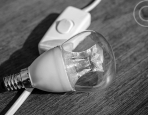Network Cabling: Media and Topologies
|
Introduction to Network Cabling Questions 1. What is the TIA/EIA 568? The TIA/EIA 568 defines structured cabling standards that enable design and implementation in commercial environments.
2. Compare and contrast TIA 568A and 568B. The TIA 568A and 568B are standards for connecting network wire to connectors. The only differences are the orders in which the wiring pairs are used.
3. What is the function of a patch panel? A patch panel is a series of circuits on jacks that monitor, interconnect, and are used for testing circuits.
4. Add these three terms to your vocabulary list, Cat 5, Cat 6, and plenum. Cat 5 – Up to 1 gbps, is the current standard Cat 6 – Supports up to 10 gbps Plenum – Expensive (5x more than cat), used in duct work for safety because Cat cables are toxic when heated
Multimode and Singlemode Fiber 1. For signaling, what type of technology does fiber optics employ? Fiber optics employs transmission by light with no RF signal.
2. Is fiber optic cable easy to tap? It is difficult to tap fiber optic cable.
3. In what type of situation would you employ multimode fiber optic cable? You would employ multimode fiber optic cable when the signal does not need to travel very far (2 km).
4. What would be a conventional light source for multimode fiber optic cable? LED is a conventional light source for multimode fiber optic cable.
5. In what situation would you employ single mode fiber optic cabling? You would employ single mode fiber optic cabling when signals need to travel a long distance (100 km).
6. What would be a conventional light source for single mode fiber optic cabling? Laser beams are the conventional light source in single mode fiber optic cabling.
UTP, STP and Coaxial Cabling 1. What type of cable do the terms 10base5, “Thicknet”, RG-8, 10base2, and RG-58 describe? The terms describe a coaxial cable.
2. What type of cabling uses conductor pairs that are twisted? Twisted pair copper cabling uses twisted conductor pairs.
3. What differentiates UTP from STP? STP protects against interference with additional shielding. UTP does not have any added shielding.
4. What is the most common form of Ethernet cabling for Local Area Networks? The most common form of Ethernet cabling for LANs is UTP.
Cable Categories 1. What is the EIA? EIA stands for Electronic Industries Alliance and they set standards for network cabling.
2. What is the TIA? TIA stands for Telecommunication Industry Association and they set standards for commercial building telecommunication standards.
3. For what is Category 3 cable used? Category 3 cabling was one of the first standardized categories and it supported 10 Mbit/s but is now obsolete.
4. Compare and contrast Cat5 and Cat5e cable. Cat5e cable supports 1Gbit/s Ethernet as compared to Cat5 and its 100 Mbit/s.
5. In what situation would you want to employ Cat6 cable? Cat6 cable should be used in situations where signals must travel long distances.
Crossover and Straight through Cables 1. What is an Ethernet straight through cable? When would you use it? An Ethernet straight through cable is used to connect workstations to network devices. They would be used to connect different devices.
2. What is the difference between a MDI and a MDIX interface? MDI are things such as a network interface card and MDIX is a network infrastructure device such as a network switch. One will transmit to one pin while the other is receiving on that same pin.
3. What is an Ethernet crossover cable? When would you use one? An Ethernet crossover cable would be used to connect like devices such as MDI to MDI.
4. If you were going to connect two CSU/DSUs, what type of cable would you use? You would use a T1 cross-over cable to connect CSU/DSUs.
Plenum and Non-Plenum Cabling 1. What is the disadvantage of using regular TWP cable in a ceiling plenum? TWP cable in a ceiling plenum can be hazardous in the case of a fire as it is not flame resistant and is toxic when burning.
Converting Media 1. Why do you always need to provide power to the device when you convert from fiber to copper? When converting from fiber to copper, you must have power to the device for the media to convert.
2. Can a network signal from almost any type of media be converted to any other type of media? Almost all media can be converted to another type of media.
Media Distance and Speed Limitations 1. What type of cable does 10base5 networking use? A 10base5 network uses RG-8U cable.
2. How far can you run on a single run of 10baseT? 10baseT can run 100 meters.
3. How far can you run on a single run of 100baseTx? 100baseTx can run 100 meters.
4. Complete Table 1 by adding the missing cable attributes.
|




